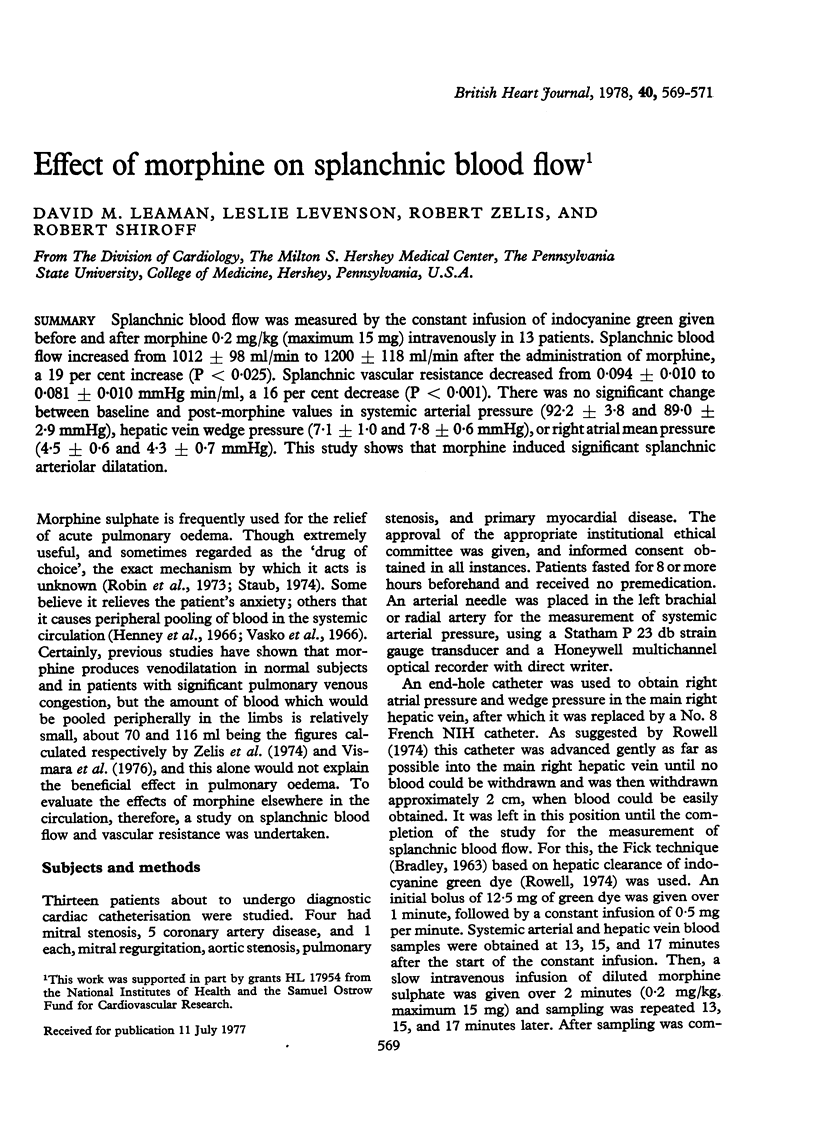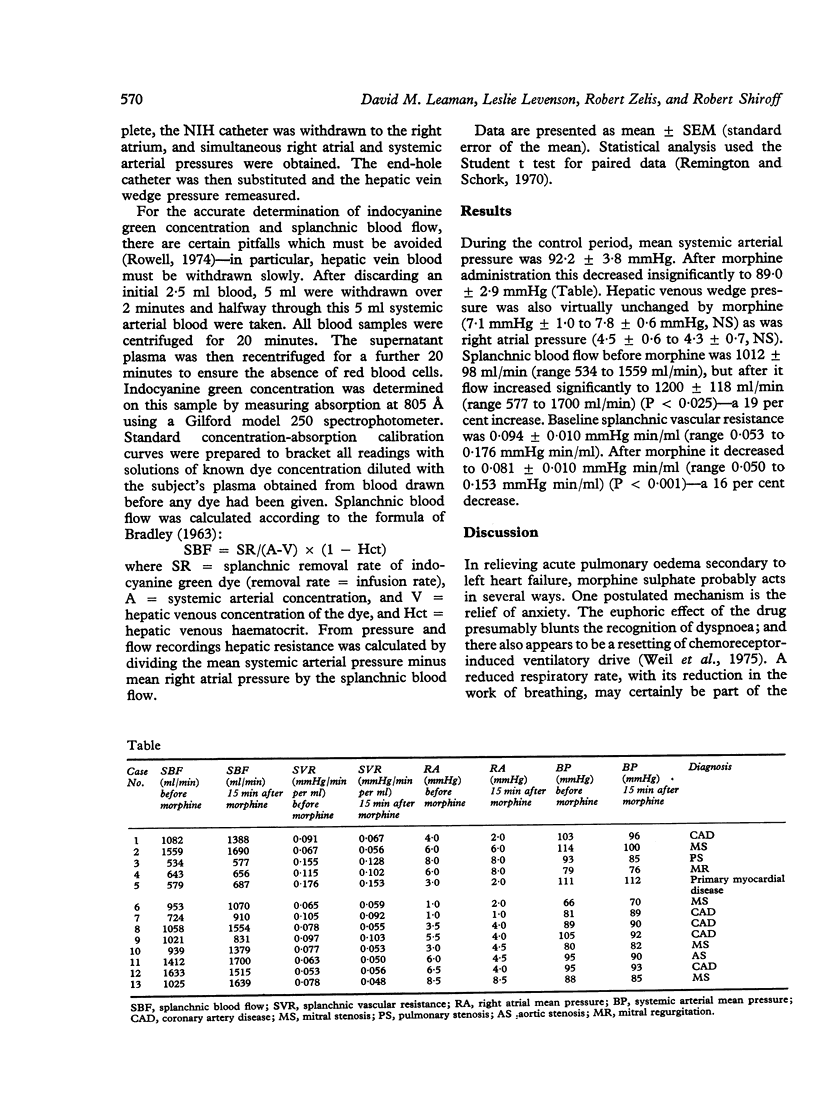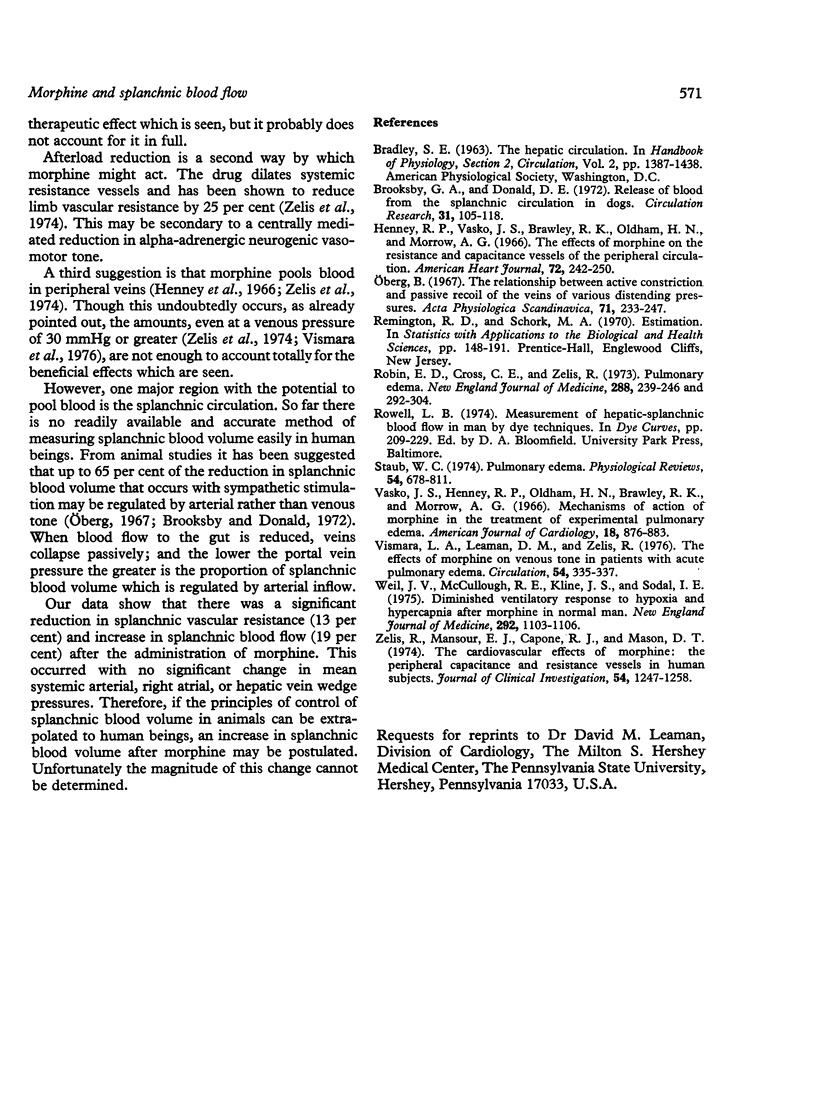Abstract
Splanchnic blood flow was measured by the constant infusion of indocyanine green given before and after morphine 0.2 mg/kg (maximum 15 mg) intravenously in 13 patients. Splanchnic blood flow increased from 1012 +/- 98 ml/min to 1200 +/- 118 ml/min after the administration of morphine, a 19 per cent increase (P less than 0.025). Splanchnic vascular resistance decreased from 0.094 +/- 0.010 to 0.081 +/- 0.010 mmHg min/ml, a 16 per cent decrease (P less than 0.001). There was no significant change between baseline and post-morphine values in systemic arterial pressure (92.2 +/- 3.8 and 89.0 +/- 2.9 mmHg), hepatic vein wedge pressure (7.1 +/- 1.0 and 7.8 +/- 0.6 mmHg), or right atrial mean pressure (4.5 +/- 0.6 and 4.3 +/- 0.7 mmHg). This study shows that morphine induced significant splanchnic arteriolar dilatation.
Full text
PDF


Selected References
These references are in PubMed. This may not be the complete list of references from this article.
- Brooksby G. A., Donald D. E. Release of blood from the splanchnic circulation in dogs. Circ Res. 1972 Jul;31(1):105–118. doi: 10.1161/01.res.31.1.105. [DOI] [PubMed] [Google Scholar]
- Henney R. P., Vasko J. S., Brawley R. K., Oldham H. N., Morrow A. G. The effects of morphine on the resistance and capacitance vessels of the peripheral circulation. Am Heart J. 1966 Aug;72(2):242–250. doi: 10.1016/0002-8703(66)90448-0. [DOI] [PubMed] [Google Scholar]
- Oberg B. The relationship between active constriction and passive recoil of the veins at various distending pressures. Acta Physiol Scand. 1967 Oct-Nov;71(2):233–247. doi: 10.1111/j.1748-1716.1967.tb03729.x. [DOI] [PubMed] [Google Scholar]
- Robin E. D., Cross C. E., Zelis R. Pulmonary edema. 1. N Engl J Med. 1973 Feb 1;288(5):239–246. doi: 10.1056/NEJM197302012880506. [DOI] [PubMed] [Google Scholar]
- Staub N. C. Pulmonary edema. Physiol Rev. 1974 Jul;54(3):678–811. doi: 10.1152/physrev.1974.54.3.678. [DOI] [PubMed] [Google Scholar]
- Vasko J. S., Henney R. P., Oldham H. N., Brawley R. K., Morrow A. G. Mechanisms of action of morphine in the treatment of experimental pulmonary edema. Am J Cardiol. 1966 Dec;18(6):876–883. doi: 10.1016/0002-9149(66)90433-4. [DOI] [PubMed] [Google Scholar]
- Vismara L. A., Leaman D. M., Zelis R. The effects of morphine on venous tone in patients with acute pulmonary edema. Circulation. 1976 Aug;54(2):335–337. doi: 10.1161/01.cir.54.2.335. [DOI] [PubMed] [Google Scholar]
- Weil J. V., McCullough R. E., Kline J. S., Sodal I. E. Diminished ventilatory response to hypoxia and hypercapnia after morphine in normal man. N Engl J Med. 1975 May 22;292(21):1103–1106. doi: 10.1056/NEJM197505222922106. [DOI] [PubMed] [Google Scholar]
- Zelis R., Mansour E. J., Capone R. J., Mason D. T. The cardiovascular effects of morphine. The peripheral capacitance and resistance vessels in human subjects. J Clin Invest. 1974 Dec;54(6):1247–1258. doi: 10.1172/JCI107869. [DOI] [PMC free article] [PubMed] [Google Scholar]


